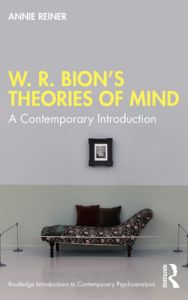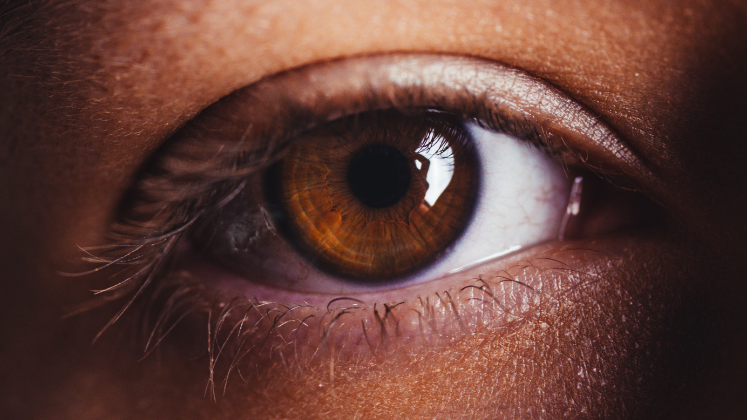In W. R. Bion’s Theories of Mind: A Contemporary Introduction, Annie Reiner explores the theoretical and clinical innovations of the influential psychoanalyst Wilfred Bion. Reiner’s lucid analysis of Bion’s later (and more controversial) work on the unconscious makes a strong case for its relevance in clinical practice today, writes Alistair Stevenson.
W. R. Bion’s Theories of Mind: A Contemporary Introduction. Annie Reiner. Routledge. 2022.
 Reiner’s study is one of a dozen Routledge primers designed to make psychoanalytic thought more digestible. This is no easy task, given that her subject matter is the work of the British psychoanalyst Wilfred Bion (1897–1979), an unorthodox figure whose thinking questions the bedrock assumption that underlies the Freudian and Kleinian schools of psychoanalysis: that the patient already knows how to think. (Small wonder, then, that in problematising these renowned theorists, fellow psychoanalysts so readily discredited Bion’s later work.). Luckily, Reiner’s prose is clear and concise throughout. Indeed, this succinctness facilitates her central argument that Bion’s divisively so-called ‘supernaturalist’ later writing (between the 1960s and 1970s), particularly concerning his notorious concept of ‘O’, was only possible in light of the conceptual framework he developed earlier in his career (from the 1940s to the early 1960s), including core concepts like maternal reveries and the selected fact. Nevertheless, rather than adopting a linear approach, the book flits between these phases, cleverly underlying the interconnectedness of these ideas and their benefits for therapists and patients alike. (Refreshingly, I noted that the analyst’s discourse is never given priority over the analysand’s: a humility which is not the case with Lacanian psychoanalysis.)
Reiner’s study is one of a dozen Routledge primers designed to make psychoanalytic thought more digestible. This is no easy task, given that her subject matter is the work of the British psychoanalyst Wilfred Bion (1897–1979), an unorthodox figure whose thinking questions the bedrock assumption that underlies the Freudian and Kleinian schools of psychoanalysis: that the patient already knows how to think. (Small wonder, then, that in problematising these renowned theorists, fellow psychoanalysts so readily discredited Bion’s later work.). Luckily, Reiner’s prose is clear and concise throughout. Indeed, this succinctness facilitates her central argument that Bion’s divisively so-called ‘supernaturalist’ later writing (between the 1960s and 1970s), particularly concerning his notorious concept of ‘O’, was only possible in light of the conceptual framework he developed earlier in his career (from the 1940s to the early 1960s), including core concepts like maternal reveries and the selected fact. Nevertheless, rather than adopting a linear approach, the book flits between these phases, cleverly underlying the interconnectedness of these ideas and their benefits for therapists and patients alike. (Refreshingly, I noted that the analyst’s discourse is never given priority over the analysand’s: a humility which is not the case with Lacanian psychoanalysis.)
The book begins by discussing Bion’s controversial claim that analysts should avoid assuming their patient possesses a mind. In fact, this approach has proved vital for Reiner’s clinical work because it acknowledges that some patients are without an authentic self due to early maternal trauma. As such, these individuals cannot communicate their emotions.
The book begins by discussing Bion’s controversial claim that analysts should avoid assuming their patient possesses a mind. In fact, this approach has proved vital for Reiner’s clinical work because it acknowledges that some patients are without an authentic self due to early maternal trauma. As such, these individuals cannot communicate their emotions. Thus, Reiner maintains that the analyst’s role is to help the analysand develop a mutual language for their unrealised feelings. The focus then shifts to Bion’s early theory of how an infant learns to think. This achievement rests entirely on the concept of reverie, whereby the child’s capacity for cognition emanates from its mother’s intuitive ability to dream on behalf of her offspring. In doing so, she acts as a container for the child’s anxiety (caused by her missing breast) while simultaneously demonstrating the dreaming or alpha function to her offspring. Subsequently, this helps the child transform raw emotional experiences (beta elements) into thoughts (alpha elements). Reiner quickly emphasises that, unlike Freud, Bion regards dreaming and thinking as isomorphic. Put differently, we dream to think, even while awake. Here, the author’s lucid writing demonstrates how Bion’s model relies on the premise that emotional processing is essential if an infant is to learn how to think autonomously.
Reiner repeatedly demonstrates that a breakthrough is possible should dream interpretation be used to reveal the patient’s dormant self
Reiner supports the above assertion by referencing case studies of patients who, during infancy, could not use their mother as a container (due to, for example, maternal deprivation). Next, she explains how Bion regards the effects of such trauma as devasting because such individuals cannot use the absent mother’s breast to create the mental space necessary for the genesis of the no-thing. This latter idea denotes a complex process whereby children instrumentalise the paradoxically present absence of their mother via symbolic representation. Indeed, Reiner mentions that, for Bion, thinking demands the pairing of the thing –the mother’s actual breast –with this no-thing (or no-breast). This newfound ability means that the child can tolerate the anxiety associated with the missing breast and learn to think its thoughts. In stark contrast, less fortunate children develop a false self, directly impairing their emotional capacity. Nonetheless, Reiner repeatedly demonstrates that a breakthrough is possible should dream interpretation be used to reveal the patient’s dormant self.
Reiner deftly underscores her modus operandi, stating that the therapist can only awaken the patient’s real self by suspending their own thinking, desire, and memory and, in doing so, access the all-important selected fact
It is not until midway through this work that Reiner realises her goal: to marry the seemingly disconnected phases of Bion’s writing successfully. To this end, she stresses how Bion’s early notion of the selected fact – the core theme or idea from a dream – connects with one of his most controversial later ideas: the transcendent intuitive mental state known as ‘O’. Reiner explains how this cryptic concept refers to the timeless unknown realm of truth that lies behind creative experience. In forging this link, Reiner deftly underscores her modus operandi, stating that the therapist can only awaken the patient’s real self by suspending their own thinking, desire, and memory and, in doing so, access the all-important selected fact. What is particularly noteworthy about this positioning is that Reiner uses the idea of O to explain the theoretical knowledge that Bion himself acquired earlier in his lengthy career. This circular stance underscores a claim later in the book that any interpretation garnered from O relies on the patient’s adult mind being individuated via knowledge (or ‘K’) of the no-thing.
Despite it being an impressive survey of Bion’s lifework and its application, a theoretical inconsistency arises toward the end because the notion that K must be present for access to O contradicts the idea that only the latter grants access to the former
Despite it being an impressive survey of Bion’s lifework and its application, a theoretical inconsistency arises toward the end because the notion that K must be present for access to O contradicts the idea that only the latter grants access to the former. As such, it is unclear whether we are dealing with a reciprocal relationship or a Cartesian dualism. For this reason, it might have been helpful had Reiner differentiated between these ideas via recourse to ontology (being) and epistemology (discursive knowledge). (If K signifies knowledge, does O stand for ontology?) However, some clarification is provided when Reiner posits that O and K are necessary to access the former’s absolute truth. Regardless of their ambiguous ordering, Reiner proceeds to defend the clinical deployment of these concepts, arguing that, ultimately, they provide therapeutic insights. Further, the author convincingly answers the fervent criticism directed toward Bion’s later work, particularly from some members of the Tavistock clinic, who decried O as supernatural whimsy. Instead, Reiner insists that this concept corresponds to a secular mysticism that has nothing to do with organised religion.
Reiner’s writing provides an admirable defence of Bion’s affirmative take on the unconscious
Ultimately, Reiner’s writing provides an admirable defence of Bion’s affirmative take on the unconscious, one that draws on Freud’s notion of the oceanic feeling – a sense of oneness with the universe – to insist that the point of analysis is to harness, rather than tame, O’s chaotic energy. What is especially persuasive about this book is that it shows that by channelling O, patients and therapists might mutually benefit from the resultant anxiety reduction. In conclusion, by skilfully interweaving these ideas, Reiner deepens their meaning and underscores how an integrated approach to Bion’s work can enlighten clinical practice by helping us learn to think our thoughts.
Note: This review gives the views of the author, and not the position of the LSE Review of Books blog, or of the London School of Economics and Political Science. The LSE RB blog may receive a small commission if you choose to make a purchase through the above Amazon affiliate link. This is entirely independent of the coverage of the book on LSE Review of Books.
Image Credit: Jorm Sangsorn on Shutterstock






